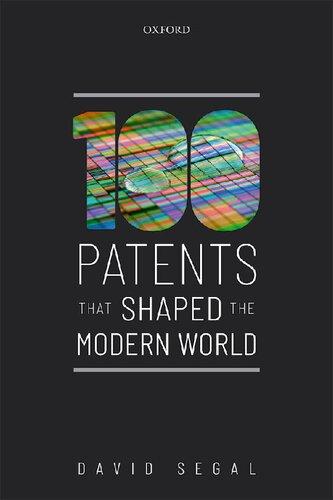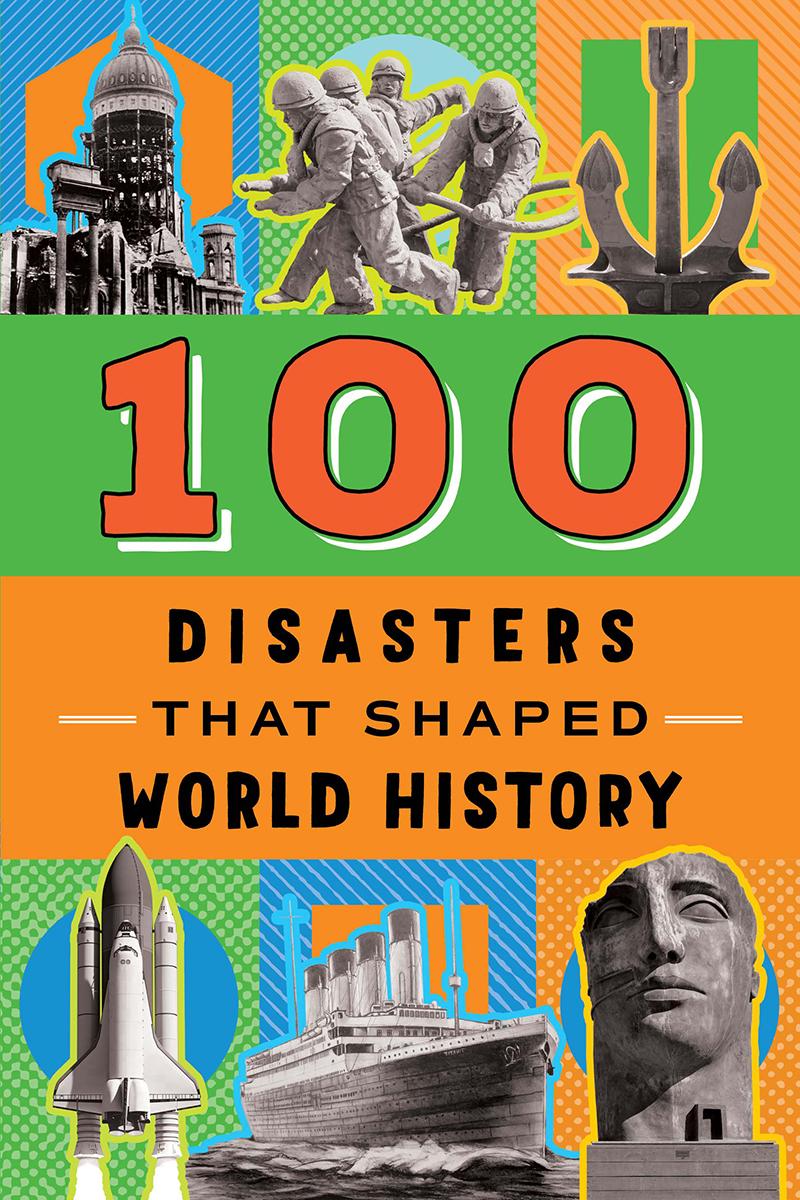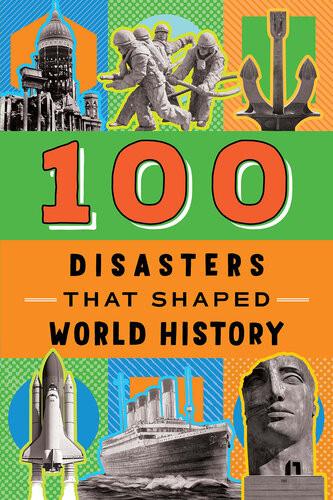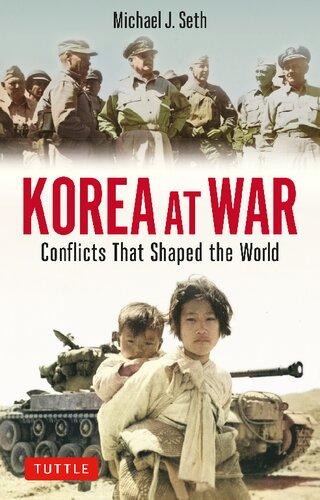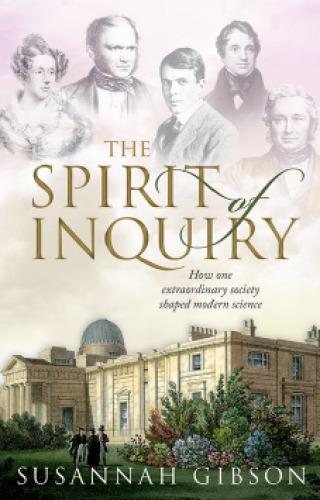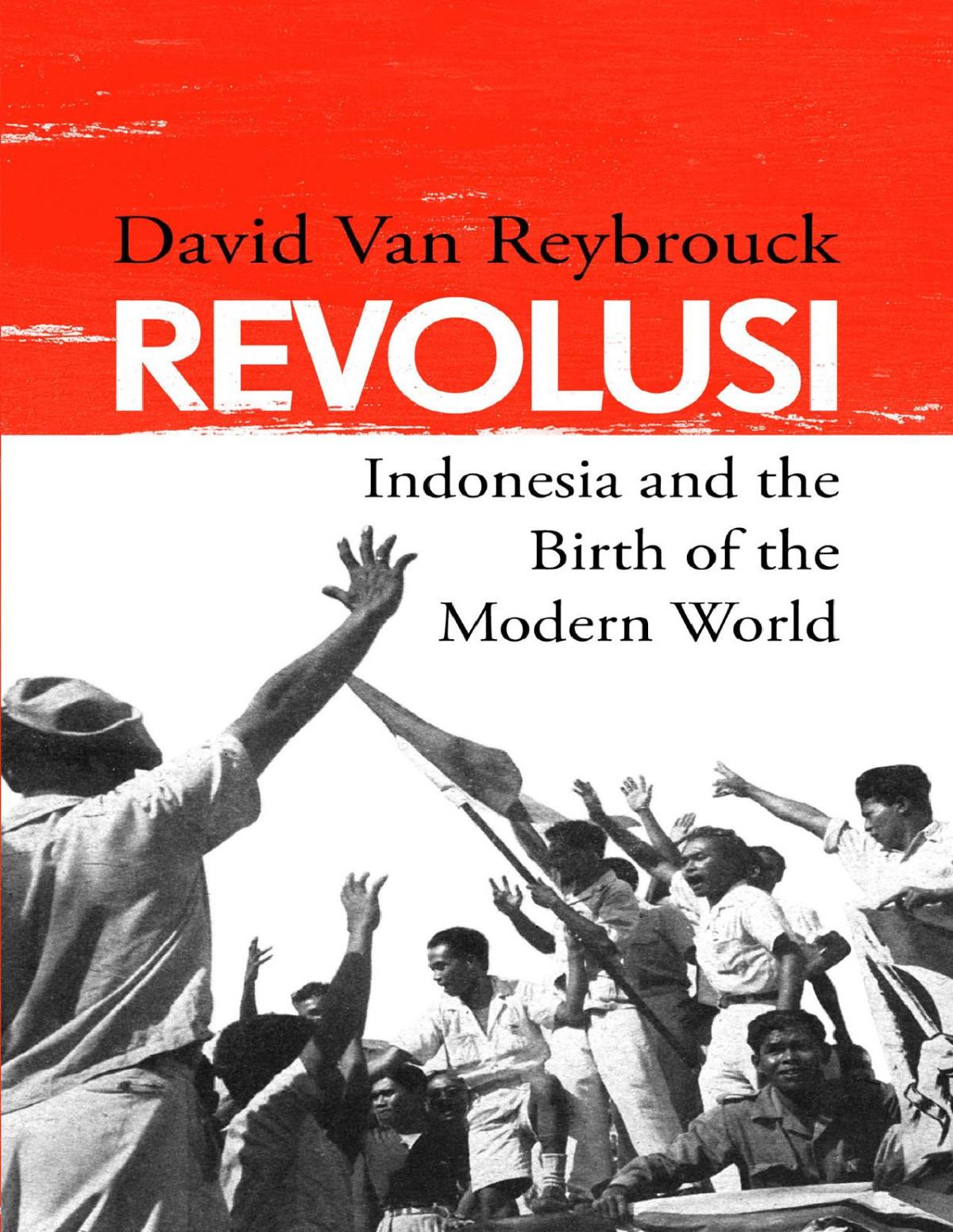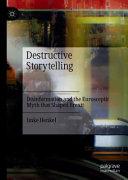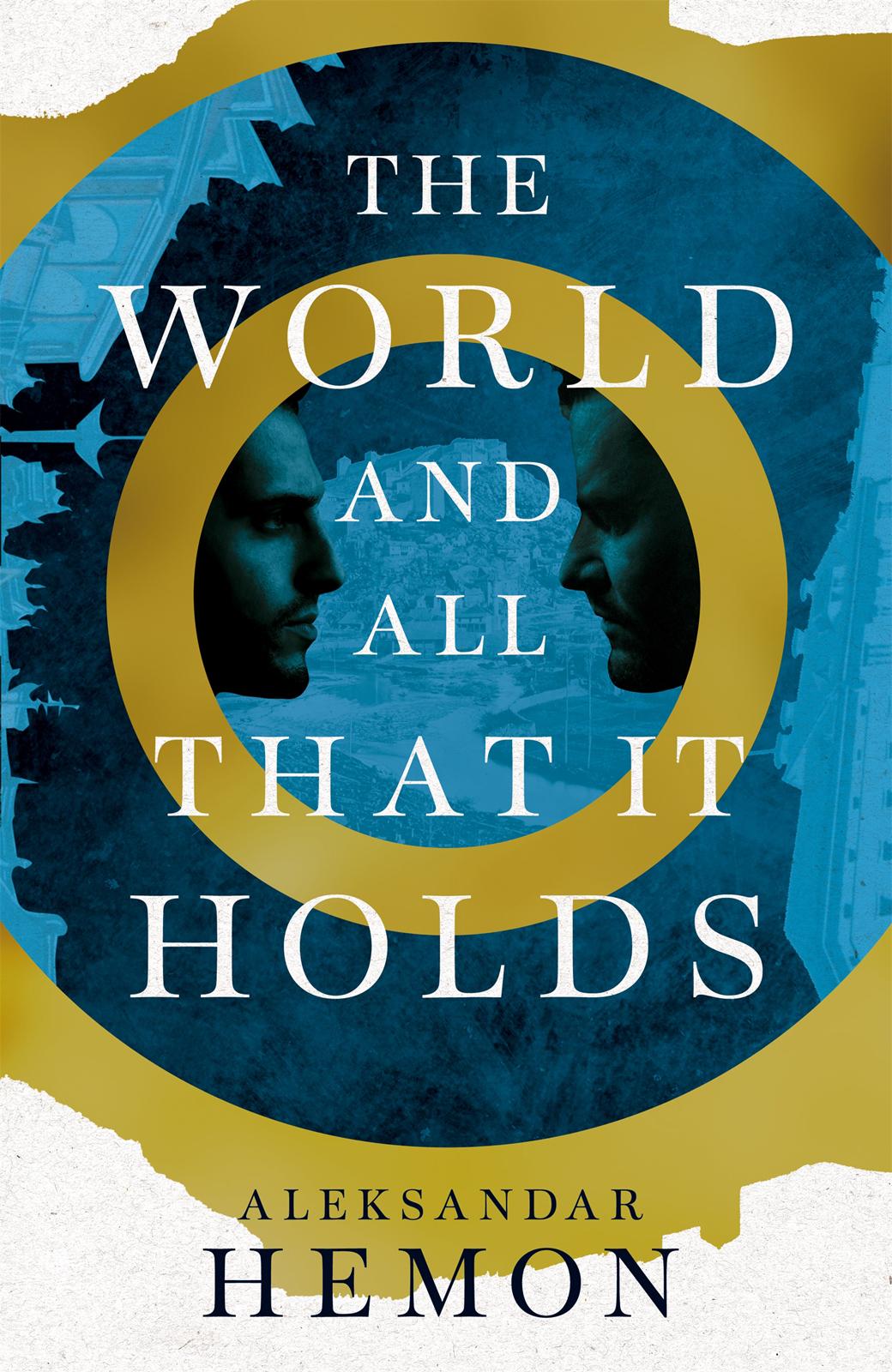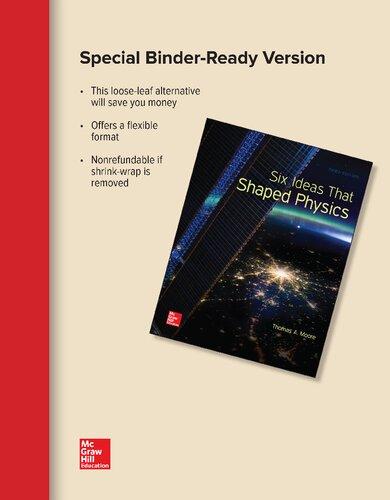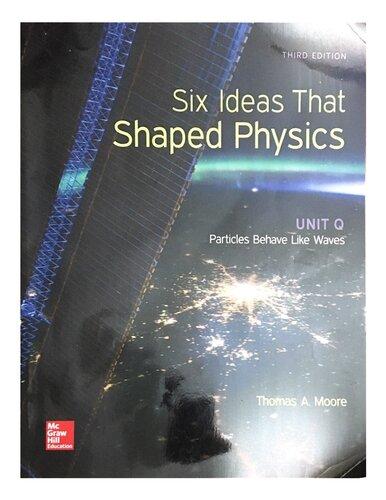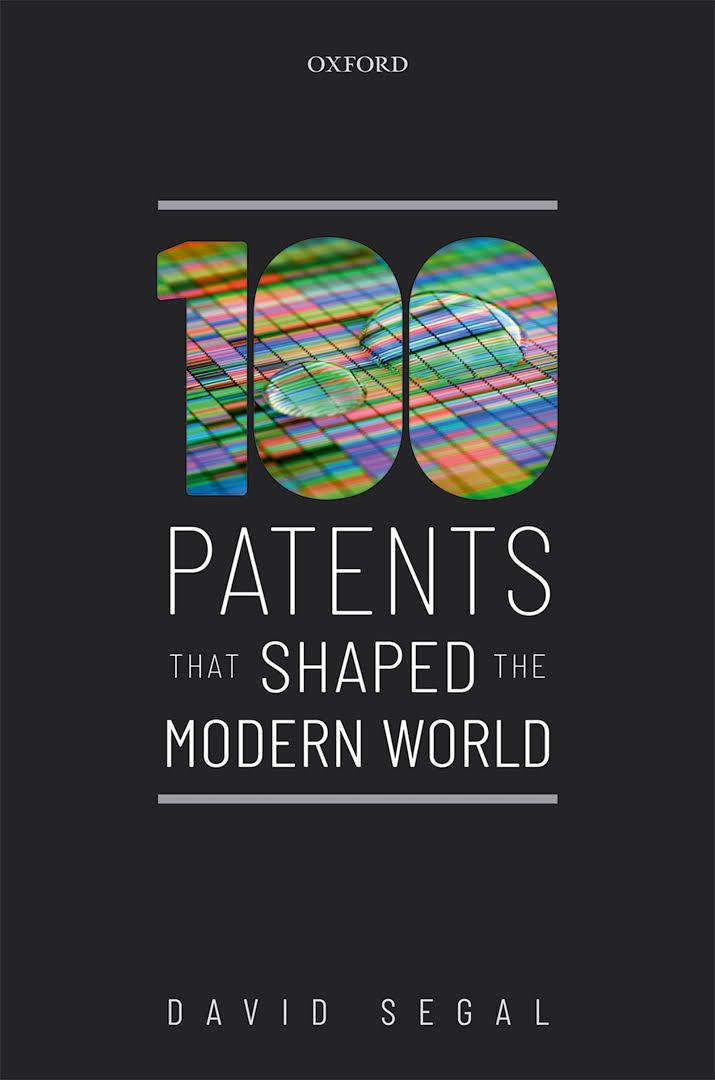1 Facts, Alternative Facts and Patent Literature
When I use a word, it means just what I choose it to mean, neither more nor less —Humpty Dumpty in Through the Looking Glass, by Lewis Carroll
INTRODUCTION
The mathematician Kurt Gödel showed in the early 1930s in what is known as his Incompleteness Theorem that it was not possible to enumerate in logic the true statements of mathematics. Put simply, there are some mathematical statements that are true but cannot be proven. This theoretical work together with work by Alan Turing in England on Turing machines and the work of Alonso Church in the USA on lambda-calculus laid the foundation for the digital age of the twentieth and twenty- rst centuries. Many other people played important roles in the practical development of digital computers so important for the economic well-being of societies. The expansion of the Internet in recent years has allowed people across the world to gain access to vast quantities of information that they would have found di cult to access several years ago. The idea of whether statements are true is very relevant to information that is retrieved from Internet searches, as in the second decade of the twenty- rst century there is increasing awareness that information on the Internet may in fact refer to ‘fake news’. One source of information that is often overlooked is the patent literature. Patents are examined before being granted and can be challenged for their accuracy. It is assumed in this book that information described in patent documents represent facts. They can be accessed through the Internet. Patents describe inventions and inventions have given rise to rapid changes in technology over a lifetime and these changes have had a tremendous e ect on everyday life. But patent documents can be di cult to read, especially to anyone who is not familiar with them. The quotation at the start of this chapter is relevant for describing patent information
One-Hundred Patents That Shaped the Modern World. David Segal.
© David Segal 2019. Published in 2019 by Oxford University Press.
DOI: 10.1093/oso/9780198834311.001.0001
that is encountered by students and the general public. Before giving an overview of 100 patents I give a general description of patent documents in this chapter. The description includes the general structure of patent documents, the role of patents as a form of intellectual property and why they are a useful source of technical information. The interested reader can access patent documents through websites of national patent o ces (e.g. United States Patent and Trademark O ce, the United Kingdom Intellectual Property O ce) or through quali ed patent attorneys. Patent documents do not replace other sources of information and should be considered alongside other sources, for example books, websites, newspapers, blogs, podcasts, in order to help make an assessment of how useful the technical information is.
The second decade of the twenty- rst century is one, as indicated earlier, where information has become easily accessible through Internet searches to people across the world and is a time of great technological change. The latter is driven by inventions represented in readily accessible patent documents. The growth of the Internet has encouraged novel working practices and has a ected many aspects of everyday life. For example, people can reserve a room in a house for a short time or request a car with driver to take them to a destination using mobile phone ‘apps’ Airbnb and Uber, respectively. In other words, the Internet has led to disruptive technologies that challenge existing working practices. Other disruptive practices include online shopping and online banking. Thus, the twenty- rst century is one where disruptive technologies may become more common and patent information can shed light on possible future technologies. By making an analogy with work carried out by the mathematician Kurt Gödel, who showed that some mathematical statements can be true but cannot be proven, it is important to know that when considering the accuracy of non-mathematical statements (i.e. statements in everyday language) that they are accurate and true. As an aide to the reader in Chapter 2 I have grouped some of the examples highlighted in the descriptions of the 100 patents to indicate how technologies have changed over time and how they may change later in this century and to show their impact on societies. This grouping is shown in the latter part of this chapter.
‘Fake news’ was named Word of the Year 2017 by Collins Dictionary. It is de ned as ‘false, often sensational, information disseminated under the guise of news reporting’. (Source: Daily Mail, p.3, 2 November 2017)
PATENTS
A patent is a legal document and conveys a right to its owner, that is, the owner of the invention described in the patent. This right allows the owner to prevent
others from practicing the invention including manufacturing or importing goods for sale into a country where the patent is enforced for a limited period of time, usually 20 years from the ling date for the patent. The patent owner does not have an automatic right to exploit the invention. The patent is a contract between the patent owner and a national government and in exchange for the right to exclude others from practicing the invention, the patent owner has to disclose the details of the invention in the public domain. Thus, the applicant is given a monopoly for a limited period of time. There are no world patents and a patent is validated in individual countries. Patents are also a vast source of technical information; for example, there are approaching 10,000,000 granted United States patents and the rst United States patent was granted on 31 July 1790.
There is no restriction on the length of a patent, the language used in patent documents can appear to be arcane and sentences can be long. One patent describes one invention and, in general, patents describe a product, a method for making the product or a system. As a form of property, patents can be sold, licensed or allowed to lapse so that anyone can practice the invention. The quotation from Through the Looking Glass at the beginning of this chapter can seem relevant to the interpretation of patent documents because words and phrases in a specication do not have to have the same meaning they have in everyday life. Their meaning is determined by the way they are de ned in the speci cation.
All patent documents have the same structure:
(a) Front page. This contains the title, abstract, inventor names, applicant (the owner), patent classi cation, priority date, ling date and application date.
(b) Background to the invention. This section gives a description of the prior art, that is, earlier published documents of relevance to the invention. This section is a good source of references when nding out about a new eld of technology.
(c) Summary of the invention. This section gives a brief description of the invention.
(d) Embodiments. Several ways of producing the invention are described along with the preferred way.
(e) Drawings. Labelled drawings are supplied at the front or back of the document.
(f) Claims. The legal part of the patent document that describes the scope of the rights given to the applicant (owner). Independent claims are claims that do not refer to other claims. The rst claim, namely claim 1, is always an independent claim. Other claims are known as dependent claims because
they can refer to an independent claim or to other dependent claims. For example, the second claim, claim 2 in the list of claims, can be a dependent claim. Note that a document can contain more than one independent claim.
The description, drawings and claims for a patent application are the patent speci cation, and only features described in the speci cation can be claimed.
Patent infringement can occur when someone has a product, method or system described in part in at least one claim of another patent. Two patent documents that have similar claims are said to potentially interfere with each other but patent documents do not infringe other patent documents.
The general approach to ling a patent document is outlined in the following stages:
(a) The speci cation is prepared and then led or deposited at the United King dom Intellectual Property O ce (UKIPO) if prepared in the United Kingdom or the United States Patent and Trademark O ce (USPTO) if prepared in the USA. A ling date is then issued by UKIPO. Additions, that is, new material to the speci cation can be made within twelve months of ling and additions are given a new ling date. The applicant can request a search report from UKIPO and this report indicates prior art documents that may a ect patentability.
(b) Twelve months after initial ling of the original speci cation, lings are combined and a decision is taken by the applicant on which route to take in order to obtain granted patents. For example, the applicant may decide just to proceed with the ling process in the United Kingdom or to le for an international application or a regional ling at, for example, the European Patent O ce. Filings in individual countries such as the USA, China or Japan are made at this twelve-month stage. Translations of patent documents in some countries are made at this stage.
(c) The patent application is published eighteen months after the initial ling.
(d) Examination of the speci cation takes place at national patent o ces over a period of several years, for example four years. In order to obtain a granted patent, the invention must be novel, i.e. not disclosed to the public at the time of ling the patent application. Also the invention must be inventive or non-obvious, so it could not be predicted how the invention works by consideration of published documents in the public domain before the ling date. In addition to being novel and inventive, the invention must be capable of industrial application.
(e) Grant fees are paid on grant and renewal fees are paid, usually each year, to keep the patent in force. The lifetime of a granted patent is usually 20 years from the ling date.
Patent infringement relates to manufacturing in or importing an invention into a country where a patent protects the invention. Lawsuits are held before a jury in the USA and before a judge in the United Kingdom. While traditionally lawsuits are brought about between two manufacturers, lawsuits brought about by non-practicing entities (NPEs) are a feature of cases in recent years. NPEs are individuals or rms who own patents but do not directly use their patented technology to produce goods or services. Instead NPEs assert their patents against companies that do produce goods and services. NPEs are sometimes referred to as ‘patent trolls’, but when used in this way the phrase has derogatory overtones.
PATENTS AND INTELLECTUAL PROPERTY
Patents are a form of intellectual property originating from creations of the mind. Other forms of intellectual property include copyright, trademarks, designs, databases and trade secrets. When a patent has lapsed and the limited monopoly collapses, a third party can manufacture the product and this approach happens in the pharmaceutical industry for generic drugs. When a patent lapses, a manufacturer can continue to use a trademark for brand recognition. As an example, although patent protection for Lycra® has lapsed, the manufacturer can still use the trademark and although the identical product can be produced by third parties, the latter cannot use the trademark without permission.
A registered trade mark is represented by a superscript ® while an unregistered trademark is represented by a superscript ™.
PATENTS AS A SOURCE OF TECHNICAL INFORMATION
Patents are a major source of technical information and often the results of scienti c research are only published in the patent literature. Table 1 lists some patent numbers and the subject of the inventions in order to give an idea of the scope of technologies covered by the patent literature.
Table 1 Patents as a source of technical information
Patent numberSubject area
Year of grant or publication
US 3633 Vulcanisation of rubber1844
US 223,898Electric lamp 1880
US 586,193 Radio transmission 1897
US 644,077Acetylsalicylic acid 1900
US 1,266,766Cellophane 1918
CA 234336 Insulin 1923
US 1,811,959Neoprene 1931
US 1,929,453Polyvinyl chloride 1933
US 2,130,947Nylon 1938
US 2,277,013Xerography 1939
US 2,230,654Polytetra uoroethylene1941
US 2,502,488Semiconductor ampli er1950
US 2,752,339Cortisone 1956
US 3,353,115Ruby laser 1960
GB 854211 Hovercraft 1960
US 3,083,737Velcro® 1963
US 3,174,851Nitinol 1965
US 3,434,015Silicon chip 1969
US 3,541,541Computer mouse 1970
US 3,671,542Kevlar® 1972
US 3,953,566Gore-Tex® 1976
US 4,683,202Polymerase chain reaction1987
US 5,143,688Magnetic resonance imaging1992
US 5,426,037Monoclonal antibodies1995
US 7,345,671iPod 2008
WO 2013/176772Gene editing (CRISPR)2013
COMMUNICATIONS
The twenty- rst century represents a digital world, but rapid advances in recent years can be traced back to theoretical work carried out by the eminent physicist James Clerk Maxwell in the nineteenth century who predicted the formation of electromagnetic waves such as radio waves and the experimental con rmation by Heinrich Hertz in 1887 that such waves exist. Marconi succeeded in transmitting radio waves across the Atlantic Ocean but it was the development of the thermionic valve (also known as the vacuum tube) in the rst decade of the
twentieth century that promoted the development of practical broadcasting by radio and later by television. Possession of radios and television sets increased in the USA throughout the 1920s and beyond. The valves, in particular the diode and triode (also known as the audion), acted as recti ers that converted an alternating current signal to a direct current signal while the triode acted as an ampli er that avoided the use of headphones when listening to broadcasts. The development of semiconductor transistors and their assembly on circuit boards replaced valves in the early 1960s. But it was the development of integrated circuits on silicon chips in the early 1960s principally by Robert Noyce and Jack Kilby that brought about the miniaturization of electronic circuits and the ability to assemble more and more transistors on a chip using photolithography and photoresists, which in turn was a vital step in development of mobile devices so prevalent today. The increase in packing density of transistors seems to follow Moore’s Law, where the number of transistors increases exponentially with time (for example, doubling every two years). Whether this increase will continue for the foreseeable future is not clear but it is possible photolithography using X-ray sources rather than argonuoride (ArF) excimer lasers may increase the packing density.
COMPUTING
Thermionic valves found their rst application in radio broadcasting through their rectifying and amplifying properties of radio signals. But it was their ability to act as switches and process signals in the form of binary ones and zeros that found application in switching apparatus in telephone exchanges to connect calls. The Second World War provided impetus for development of electronic computers to break German codes and in the United Kingdom this activity is associated with work carried out at Bletchley Park by Alan Turing and others. However, the rst programmable stored-memory computer known as the ‘Baby’ was constructed at Manchester University by Frederic Williams and Tom Kilburn in the late 1940s. Kilburn’s earlier work on radar systems proved crucial in development of a computer memory based on a cathode ray tube. This computer memory replaced mercury delay lines that had been used previously.
Transistors work through applying voltages and the movement of electrons but as transistors shrink in size, limitations on their use arise due, for example, to electron tunnelling e ects. There is much interest in the development of quantum computers that do not rely on the properties of transistors and are not hindered by the size limitations that apply to digital computers. They depend on
quantum mechanical properties such as spin angular momentum. Whereas in digital computers bits can be either binary 0 or 1, in a quantum computer a qubit (i.e. quantum bit) can have values of 0 and 1 simultaneously.
Quantum computing may turn out to be an important technology in the twenty- rst century if practical computers can be built. If this is achieved then the type of encryption methods including the so-called RSA technique used in, for example, online banking may not be secure.
LIFE SCIENCES
DNA sequencing of genes has become an important technique in the development of molecular biology since the elucidation of the structure of DNA in the early 1950s and is very important in the growing eld of personalised medicine. The polymerase chain reaction (PCR) and its implementation is also crucial to the development of the life sciences. The costs for carrying out DNA sequencing have fallen in recent years and this has helped to drive activity in the life sciences. In the past few years a potentially disruptive technology has emerged in the life sciences, namely gene editing also known by the acronym CRISPR (clustered regularly interspaced short palindromic repeats). This technique raises important ethical issues as it has the potential to alter the germ line of the human race and use of the technique swill need to be monitored and perhaps regulated by governments.
TRANSPORT
Since the invention of the diesel compressor engine at the end of the nineteenth century the automobile has made a large impact on the Earth’s landscape in the twentieth century. Thus, roads have been constructed, tra c jams have occurred, worldwide carbon dioxide levels have been a ected, a large worldwide workforce supports the automobile industry and suburbs have expanded in towns and cities. However, in the twenty- rst century there has been increasing interest in the development of autonomous vehicles and drones. The latter are unmanned aerial vehicles, piloted remotely or automated. They can deliver technology or transport items by air to di cult-to-reach or dangerous locations without risk to human life. How autonomous vehicles and drones a ect everyday life and working practices remains to be seen.
UNEXPECTED CONSEQUENCES OF TECHNOLOGICAL CHANGES
The twentieth century was a golden age for the invention of synthetic polymers, that is polymers derived from petrochemical sources, namely oil and gas. Such polymers include polyethylene, nylon, polyester, polyurethane, polyvinyl chloride and polytetra uoroethylene. It has been estimated that eight billion tons of plastics (i.e. synthetic polymer) have been manufactured since the early 1950s but it is important to note that many plastics are di cult to recycle and how to dispose of plastics in an environmentally friendly way is a continuing problem in the twenty- rst century. In addition small particles of plastic in the world’s oceans appear to have entered the food chain with possible harmful e ects to sh, sea creatures, birds and humans. There is increasing interest in developing processes for producing polymers from sources other than petrochemical in origin. Hence, lignocellulose, a major component of wood chips and sawdust, is used a precursor (p-xylene) for terephthalic acid for conversion to polyester as an example. biodegradable polymers and plastics such as polylactic acid can be produced by bacterial fermentation using corn starch.
The development of the diesel compressor engine by Rudolf Diesel in 1897 ushered in an age of mobility for the general public. Diesel vehicles have been favoured by governments over gasoline (petrol) vehicles as they produce less of the greenhouse gas carbon dioxide. However, they produce more nitrogen oxides (nitric oxide and nitrogen dioxide), referred to as NOx and small carbon particulates (i.e. soot). The potential deleterious e ects of these emissions on the environment and air quality and hence on people’s health have been recognised by governments. The United Kingdom government aims to ban the sale and use of diesel and petrol vehicles by 2040. Whether battery technology such as lithiumion batteries can be an e ective replacement for diesel remains to be seen.
Barbed wire opened up America’s West to settlers. However, in the twentieth and twenty- rst centuries barbed wire is also associated with wars, containment of people and oppression, an unintended consequence of the invention.
SUMMARY FOR THE INTRODUCTION
Patents are a form of intellectual property and describe inventions. In order to obtain a granted patent the invention must to be novel, inventive and capable of
industrial application. A patent grants the patent owner a limited monopoly for exploiting the invention for a limited period of time in exchange for disclosing details of the invention in the public domain. Patents are a primary source of technical information; for example, there are approaching 10,000,000 granted United States patents. In recent years a feature of lawsuits on patent infringement is the participation of non-practicing entities. Patents are formally examined, can be challenged with regards to infringement or interference and can be considered to represent facts rather than ‘alternative facts’.
Based on the descriptions in Chapter 2 of the 100 patents as well as the technologies they represent, inventions have been grouped into di erent technology areas, namely communications, computing, life sciences, unexpected consequences of technological change and transport to indicate how these technologies may develop in the future.
Further reading for the Introduction
Agar, J. Turing and the Universal Machine: Th Making of the Modern Computer, pp. 72–5. London: Icon Books Limited, 2001.
Allen, R. C. The Industrial Revolution: A Very Short Introduction. Oxford: Oxford University Press, 2017.
Appel, A. (Ed.). Alan Turing’s Systems of Logic: The Princeton Thesis. Princeton, NJ: Princeton University Press, 2014.
Arean, L. F. Unsolvable Problems—Do They Exist?: Mathematics, Complexity and Computing, RBA Coleccionables, pp. 33–54. S.A.U. and National Geographic, 2017.
Copeland, B. J. Turing: Pioneer of the Information Age. Oxford: Oxford University Press, 2014. Currano, J. N., and D. L. Roth (Eds). Chemical Information for Chemists: A Primer. Cambridge, UK: Royal Society of Chemistry, 2014.
Dulken, S. van. Introduction to Patent Information, 3rd edn. London: British Library, 1998.
Hopkins, S. Improvement in the making of Pot Ash by a new apparatus and process. United States Patent, X00001, 1790.
Jackson Knight, H. Patent Strategy for Researchers and Research Managers. Chichester, UK: Wiley, 2013.
Jordan, J. Robots, pp. 97–132. Cambridge, MA: MIT Press, 2016.
Leonard, T. Survivor who packs a punch. KellyAnne Conway: Counsellor to the President. Daily Mail, p. 40 (22 September 2017).
Leonard, T. Fake news shakes trust in social media. Daily Mail, p. 8 (31 October 2017).
McManus, J. Intellectual Property: From Creation to Commercialisation. Oxford: Oak Tree Press, 2012.
Mehta, A. The future of recycling. Chemistry World 14(10), 46–9 (2017).
Mitchell, M. Complexity: A Guided Tour. Oxford: Oxford University Press, 2009.
Parrington, J. Redesigning Life: How Genome Editing Will Transform the World. Oxford: Oxford University Press, 2016.
Segal, D. Exploring Materials through Patent Information. Cambridge, UK: Royal Society of Chemistry, 2015.
Thackray, A., D. C. Brock and R. Jones. Moore’s Law. New York: Basic Books, 2015.
Tyrell, J. A. Fundamentals of Industrial Chemistry: Pharmaceuticals, Polymers and Business Chichester, UK: Wiley, 2014.
Vaidhyanathan, S. Intellectual Property: A Very Short Introduction. Oxford: Oxford University Press, 2017.
2 Inventions That Shaped the Modern World
In this chapter entries are listed according to the grant date of a patent or the publication date of an application. The latter have been used when corresponding granted patents were not available. For some elds of activity there are many contributors, for example for gene editing (CRISPR). I am responsible for the selection of the key patents, so omission of patents from other contributors should not be thought of as any criticism of their contributions.
One-Hundred Patents That Shaped the Modern World. David Segal.
© David Segal 2019. Published in 2019 by Oxford University Press.
DOI: 10.1093/oso/9780198834311.001.0001
1. ELECTRIC TELEGRAPH
S. Morse. Improvement in the mode of communicating information by signals by the application of electromagnetism. United States Patent 1647, granted on 20 June 1840.
The electric telegraph was pioneered in Britain by Charles Wheatstone and William Fothergill Cooke and by Samuel Morse in America. Transmission lines could be suspended on poles to cross land and by the late 1840s most cities were connected by landlines. Signals were transmitted by Morse code by interrupting a direct current in the line. Towards the end of the nineteenth century undersea cables were laid to connect countries by telegraph but there was an initial problem in nding a material that would act as an insulator between the metal cable core and its outer sheath that was in contact with the seawater. An answer to this problem was given by the eminent scientist Michael Faraday in the 1840s. Natural rubber is a polyisoprene based on the monomer cis-isoprene. Gutta percha is also a polyisoprene but derived from trans-isoprene and also obtained as latex from trees. Gutta percha is a hard, inelastic solid at room temperature and impervious to water but when heated it softens and can be moulded without dimensional change. Its impermeability to water made gutta percha an ideal material for insulating underwater cables for the expanding electric cable-laying business from the 1850s on land and at sea. For example, cable-laying ships laid cables from Dover, UK, to Cap Griz Nez, France in 1865 and underneath the Atlantic Ocean in 1858.
Samuel Morse was a Yale University chemistry graduate and a keen artist. One day in 1825 he was in Washington, DC, painting a portrait of the Revolutionary War hero Marquis de Lafayette while, unbeknownst to him, his wife was dying in childbirth in Connecticut. The letter informing him of her death took ve days to reach him and this long delay motivated him on to nd a faster method of communication. The mechanical problem of transmitting bursts of electricity over a wire had been solved by others, for example in Britain by Charles Wheatstone and William Fothergill Cooke, who patented the work on 12 June 1837. Morse code, which is based on a dot-or-dash signal is a source of the digital revolution of the twenty- rst century and can be considered to be a binary software system. Morse worked with Alfred Vail on the problem of how to represent letters, in particular how to allow for the frequency of letters in English. On a visit to a local printing rm they noticed that printers stocked 30,000 letter Es and 9,000 letter Ts so these were assigned the simplest signal;
hence, E was one dot and T was one dash. They also found that the letters Q and Z were rarely used with 400 and 200 letters in the type case. Morse gave Q and Z the most complex symbols: Q was --.- and Z was --.. and Morse’s innovation was identifying a simple way of transmitting information using bursts of electricity. Morse code can be considered to be a software solution to the hardware problem relating to transmission of bursts of electricity that others had solved.
Further reading
Forbes, N., and B. Mahon. Faraday, Maxwell and the Electromagnetic Field: How Two Men Revolutionized Physics, p. 113. Amherst, NY: Prometheus Books, 2014.
Kovarik, B. Revolutions in Communications: Media History from Gutenberg to the Digital Age, 2nd edition, pp. 257–8. London: Bloomsbury Academic, 2016.
Lifshitz, K. B. Makers of the Telegraph: Samuel Morse, Ezra Cornell and Joseph Henry. Je erson, NC: McFarland, 2017.
Segal, D. Gutta percha—Laying the foundation for the information age. Letter to Materials World, 24(10), 25 (2016).
2. VULCANISATION OF RUBBER
C. Goodyear. Improvements in India-rubber fabrics. United States Patent 3633, granted on 15 June 1844.
Charles Goodyear (1800–60) developed the vulcanisation process in which latex gum was heated with sulphur and white lead at around 180°C, producing a material that was no longer sticky, and set to a hard and elastic solid that did not soften on heating. The cured rubber could be formed into solid sheets of India rubber or used for vehicle tyres or coated onto a fabric to make it waterproof; the sulphur content was around 3 weight% of the rubber content. Nowadays, sulphur compounds are used in the vulcanisation process that results in crosslinking of molecular chains of the latex liquid by sulphur bridges, hence solidifying the gum (Figure 1). Natural rubber is derived from latex gum from the tree Hevea brasiliensis and has the chemical composition of polyisoprene based on the monomer cis-isoprene (CH2=C(CH3)CH=CH2).
Nowadays, the principal synthetic rubber used for automotive tyres is based on copolymers of styrene (C6H5CH=CH2) and butadiene (CH2=CHCH=CH2), and blends of styrene–butadiene elastomers (SBR) and natural rubber are used in tyres. The work of Goodyear was important for the development and growth of the automobile industry from the end of the nineteenth century.
Mercaptobenzothiazole(MBT) Diphenylguanidine(DPG)
Figure 1 (a) Possible structures during initial vulcanisation of rubber and later ageing process and (b) typical accelerators for rubber vulcanisation (D. Walton and P. Lorimer, Polymers, p. 120, Oxford University Press, 2000).
Elastomers are materials that deform under the action of an external force and which return to their original shape when the force is removed; elastomers are associated with natural and synthetic rubbers and also polyurethanes.
Alexander Parkes (1813–90), who invented Parkesine, a plastic derived from cellulose (i.e. a cellulosic), also developed a cold-cure process for the vulcanisation of rubber. In the process, raw material was placed in room-temperature carbon disulphide solution.
The sulphur content used by Charles Goodyear for the vulcanisation of natural rubber was around 3 weight%. As the sulphur content increases, the cross-linking of natural rubber molecules increases and a hard black non-elastomeric product known as vulcanite (also referred to as ebonite) is produced when the sulphur concentration approaches 30 weight%. Applications for this early plastic in the nineteenth century included materials for fountain pens until it was superseded by other plastics.
Charles Goodyear struggled for many years to overcome a problem found by Charles Mackintosh in the early nineteenth century when rubber coatings were applied to produce waterproof materials. In hot weather the rubber became sticky while in cold weather it cracked. In 1840 he allegedly left a mixture of sulphur and rubber latex in contact with a hot stove. The paste did not melt but became gummy and this process was called vulcanisation. He received many honours but spent a lot of his capital ghting patent infringements and ended up in debtors’ prisons in England and in France. Note that the name rubber is derived from the observation by the eminent scientist Joseph Priestley that pieces of caoutchouc (the name given by the Olman tribe at the time of Christopher Columbus in the late 1400s to ‘the wood that weeps’, that is, the trees that produce rubber latex) would erase pencil markings from paper.
Further reading
Asta-Wassen, L. Plastic man. Materials World, 25(12), 48–9 (2017).
Gratzer, W. Giant Molecules: From Nylon to Nanotubes, p. 109. Oxford: Oxford University Press, 2013.
Gratzer, W. Eurekas and Euphorias: The Oxford Book of Scienti c Anecdotes, p. 257. Oxford: Oxford University Press, 2002.
Jack, A. They Laughed at Galileo, pp. 195–200. London: Constable, 2015.
Loadman, J. Tears of the Tree: The Story of Rubber—A Modern Marvel. Oxford: Oxford University Press, 2014.
Segal, D. Materials for the 21st Century. Oxford: Oxford University Press, 2017.
3. MAUVEINE
W. H. Perkin. Producing a new coloring matter for dyeing with a lilac or purple color stu s of silk, cotton, wool or other materials. United Kingdom Patent 1984, granted on 21 February 1857.
About 700,000 tons of dyes are produced annually worldwide, of which 90% are synthetic and 10% are natural dyes from insects and plants. Six trillion litres of water are used in the manufacture of these dyes. There was, however, a time before synthetic dyes were produced and it was Sir William Henry Perkin who produced the rst synthetic dye, mauveine, in 1856. This purple dye is also known as aniline purple or Perkin’s mauve (Figure 2). Production involved oxidation of aniline with potassium dichromate and after its launch in 1857 the distinctive colour on textiles such as dresses was very popular with the general public. The historical signi cance of mauveine resides in the fact that large-scale production required industrial production of aniline by reduction of nitrobenzene and this large-scale production encouraged expansion of the organic chemistry industry. The growth of the synthetic dyestu industry at the end of the nineteenth century grew in parallel with the nascent pharmaceutical industry and many dyes were evaluated for their medicinal properties.
The synthetic dye industry is characterised by examples of accidental discovery. William Perkin (1838–1907) was working on the synthesis of the antimalarial compound quinine but the reaction product turned out to be mauveine. Another example of accidental discovery concerns the violet-blue dye indigo. In the late nineteenth century about two million acres in India were dedicated to the cultivation of the parent plant from which indigo was obtained. An uneconomic laboratory synthesis of indigo was achieved by the German company BASF in the 1890s from naphthalene obtained from coal-tar. In 1896 a laboratory worker at BASF was heating naphthalene with sulphuric acid and stirring the mixture with a thermometer. The thermometer broke and mercury from it mixed with the reactants. An unexpected product was produced, namely phthalic anhydride. It turned out that the latter was a key intermediate for the synthesis of indigo. Mercury had been converted into mercuric sulphate by the sulphuric acid and this compound acted as a catalyst for the unexpected product. Cheap BASF indigo came to market and the Indian indigo industry collapsed.
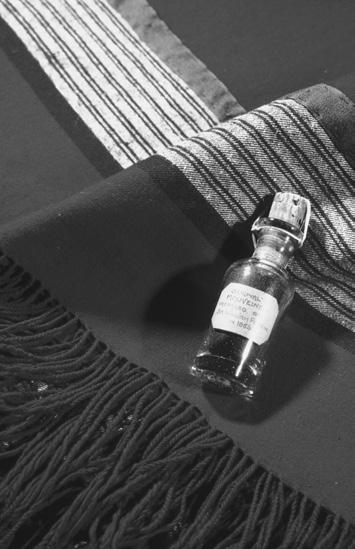
Figure 2 An early sample of mauveine and a shawl dyed with an original sample (J. Barber and C. Rostron (Eds). Pharmaceutical Chemistry, p. 180, Oxford University Press, 2013).
The description in the patent document of how Perkin prepared the dye is as follows:
I take a cold solution of sulphate of aniline, or a cold solution of sulphate of toluidine or a cold solution of sulphate of xylidine or a cold solution of sulphate of cumidine, or a mixture of any one of such solutions with any others or other of them, and as much of a cold solution of a soluble bichromate as contains base enough to convert the sulphuric acid in any of the above mentioned solutions into a neutral sulphate. I then mix the solutions, and allow them to stand for ten or twelve hours, when the mixture will consist of a black powder and a solution of a neutral sulphate. I then throw this mixture upon a ne lter, and wash it with water till free from the neutral sulphate. I then dry the substance thus obtained at a temperature of 100° centigrade or 212° Fahrenheit, and digest it repeatedly with coal tar naphtha, until it is free from a brown substance which is extracted by the naphtha. Any other substance than coal tar naphtha may be used in which the brown substance is soluble and the coloring material is not soluble. I then free the residue from the naphtha by evaporation, and digest it with methylated spirit, or any other liquid in which the coloring matter is soluble, which dissolves out the new coloring
